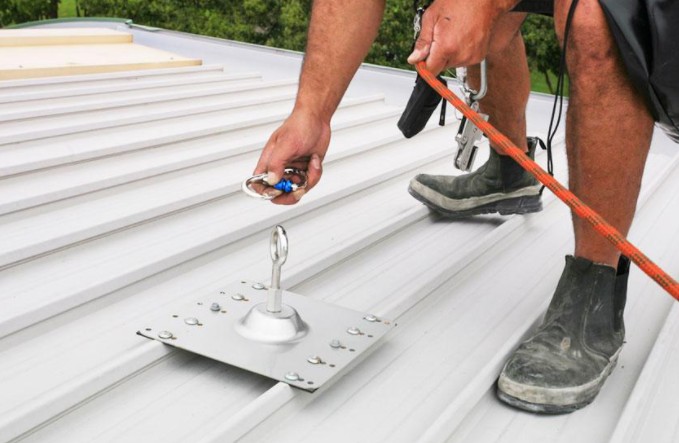As a building owner or as a building maintenance company, it is your responsibility to maintain the integrity of the structure. The problem here is with high-rise buildings. Owners and companies should never neglect the importance of the right roof anchor. Roof anchor points are invaluable when it comes to working at heights. Having the right roof anchor points is essential to prevent fall fatalities. Whether you are thinking of rope access window cleaning or remedial maintenance. You need to ensure safety, roof anchor points must be authenticate.
But what are roof anchor points?
Roof anchor points are restraint points which are essential parts of fall protection systems. Further, it is use by workers who operate at heights, anchor points are available in such a way to prevent injury or death by falls.
A roof anchor is generally usable in tandem with other height safety personal protection equipment (PPE) such as harnesses or lanyard.
Before having roof anchor points installed, it’s important to understand the purpose of anchor, different types of anchors and their roles.
Roof anchors are generally used for two primary purposes:
- Fall arrest systems
- Rope access system
Roof anchors play a vital role in rope access remedial work or any high-rise building repair and maintenance work.
Different types of roof anchor points!
There are several types of anchor points, one of which is an abseiling anchor. As the name suggests ‘abseiling’, this is for tradesmen who abseil or rappel down from heights.
The other type is a fall arrest. It is a type of anchor which involves the safe stopping of a person already falling. For example of fall arrest can be a catch platform, lifelines, or a rope grab.
Anchor Point Certification
Anchor point certification means checking that the roof points meet all requirements and is in safe working order. Futhermore, it is very much crucial to ensure that the roof point anchors are authenticate before any work on height is performed. Getting un-certified anchors can be a risk to the safety of the person working. Furthermore, after installation of an anchor point, they will issue you with a height and safety certification immediately.
If anchors are not certified, is it safe to use them?
No, it is not at all safe to use, and building owners must certify anchors every 12 months. Re-certification assures that the anchors are always fit for use. Besides if unfortunately, something happens while using those uncertified anchors. Both the company and you, as a customer, will be held liable.
How to maintain roof anchor points?
With anchor points, we need not have to worry about putting much effort into maintenance. Unlike high-rise maintenance and high rise window cleaning, roof anchor point systems require zero maintenance. In short, if it has been professionally installed and correctly configured.
However, anchor points need inspection approximately every six to 12 months by a qualified technician to ensure points are safe to use and a technician can perform the job as intended.
For most premises, roof safety recertification is necessary every 12 months. This is an obligation that the owners must not overlook since unsafe height safety can cause serious injuries or even death.
Importance of recertification
Aside from the legal obligation to maintain safety compliances. Roof safety recertification is crucial because of all the things that can go wrong when working at heights.
It is strictly recommended getting your anchor point system checked and certified every six to 12 months. Because of how fundamental a good roof anchor point system is to fall prevention.
Conclusion!
To summarize, roof anchor points are the most important part of the entire height safety system. If you are looking for building maintenance in Sydney, get in touch with Next Level Painting.
https://www.nextlevelpainting.com.au/services/rope-access-painting/Daniel Clark
AirRentalz
The New Travel Experience

